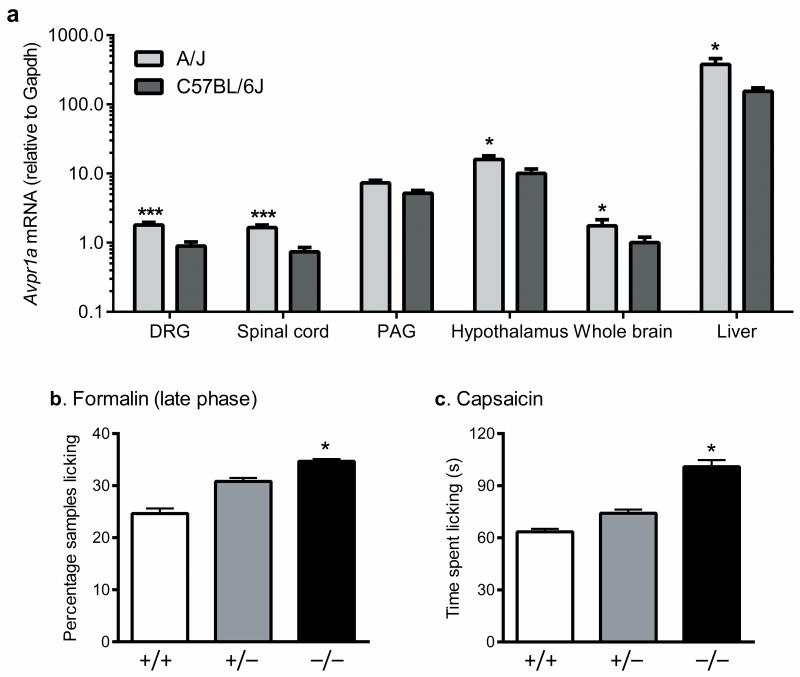Fig. 2.
Functional evidence for Avpr1a's involvement in pain. a) Formalin pain-resistant A/J mice display significantly higher basal expression of Avpr1a than pain-sensitive B6 mice in various loci. A strong trend (p=0.13) towards significance was seen in the periaqueductal gray (PAG). Bars represent mean (± SEM) mRNA expression in arbitrary units compared to the housekeeping gene, Gapdh; n=3–4 mice/strain. *p<0.05; ***p<0.001. b) As predicted, Avpr1a−/− mice (−/−) display more late-phase formalin pain behavior than wildtype mice (+/+); heterozygous mice (+/−) were intermediate. Bars represent mean (± SEM) % positive samples (n=9–17 mice/genotype); *p<0.05 compared to +/+. c) Unique among a variety of other pain modalities examined 23, Avpr1a−/− mice (−/−) display increased capsaicin pain behavior. Bars represent mean (± SEM) time spent licking the injected paw (s) (n=12–14 mice/genotype); *p<0.05 compared to +/+.

